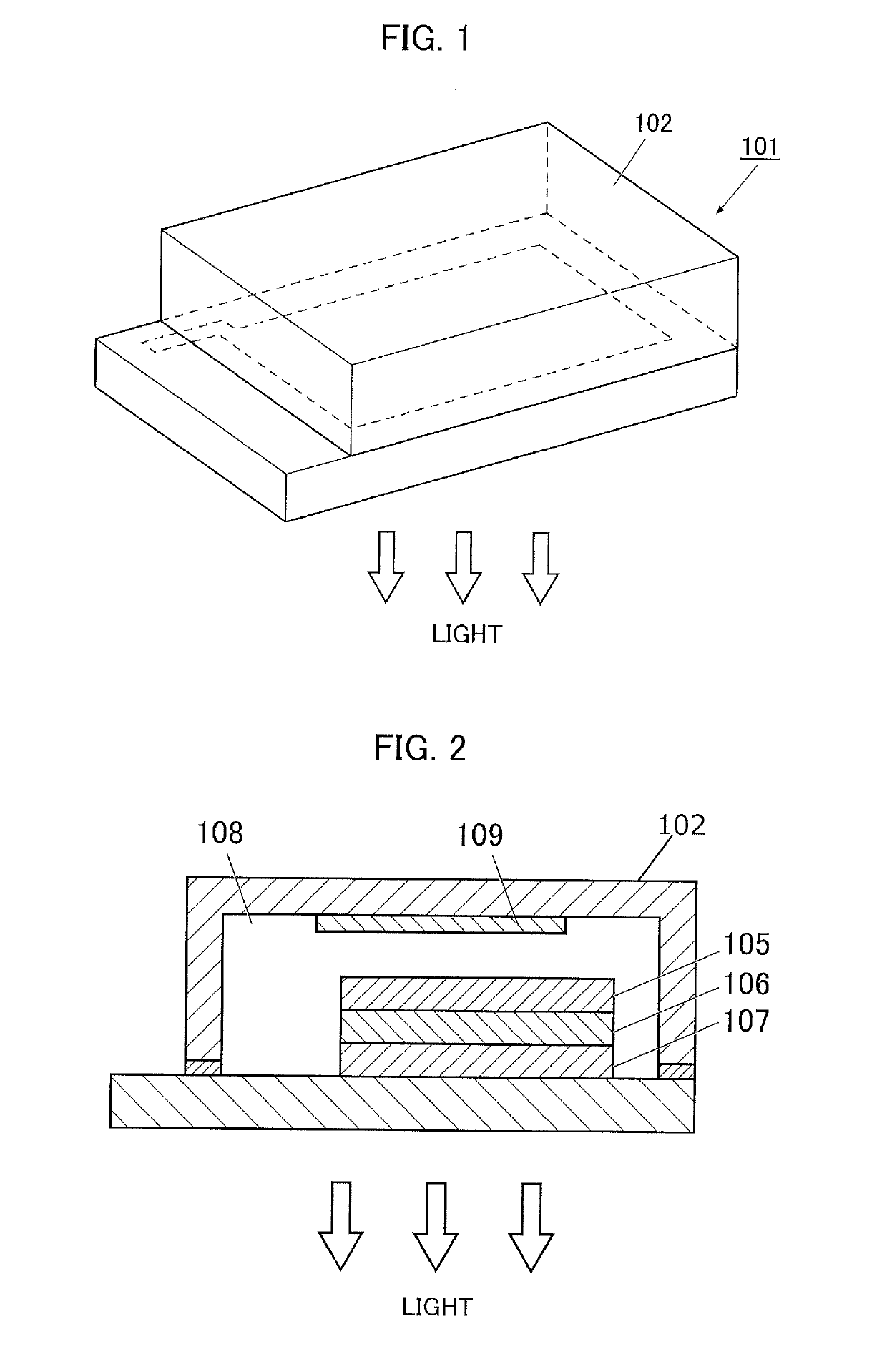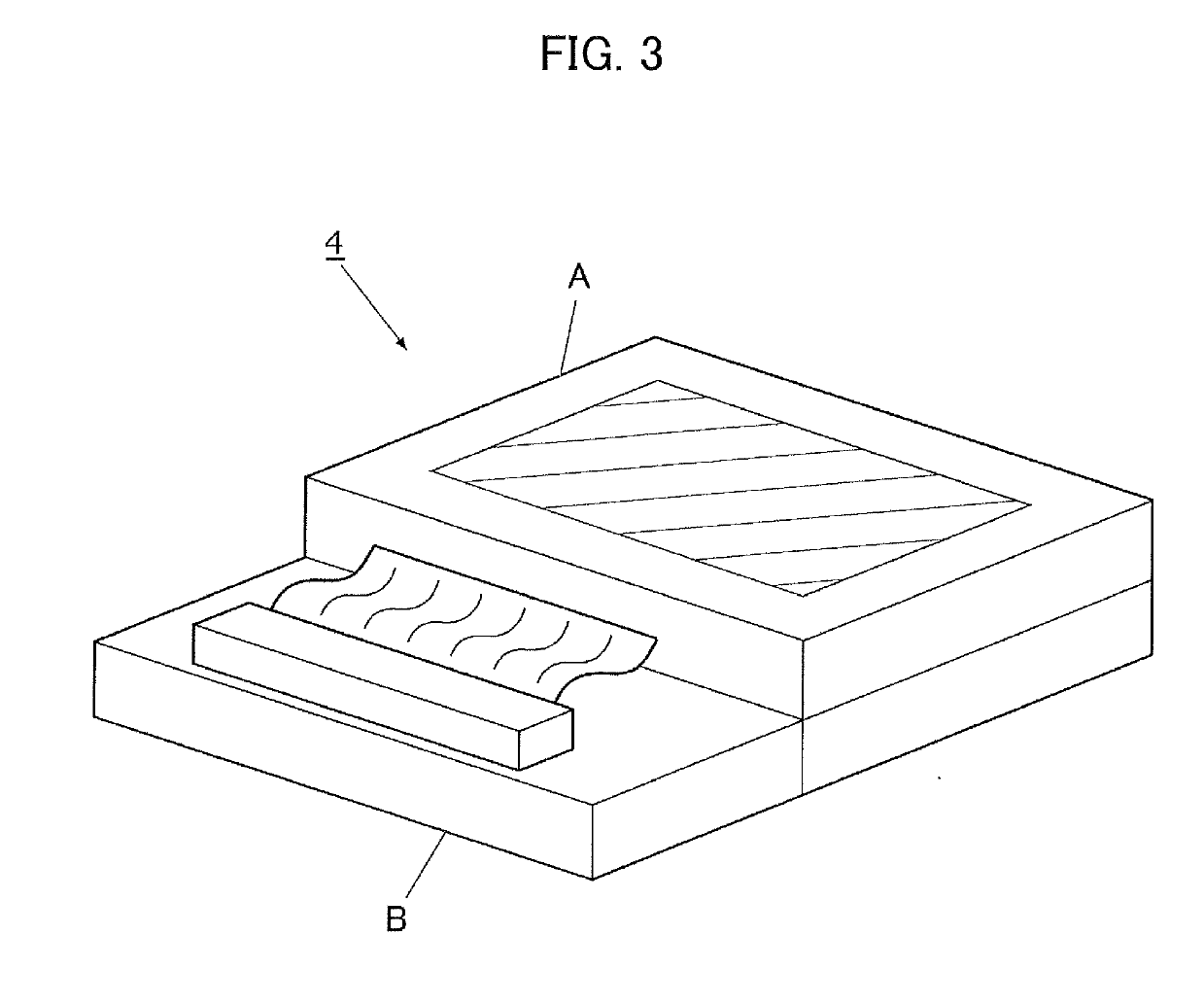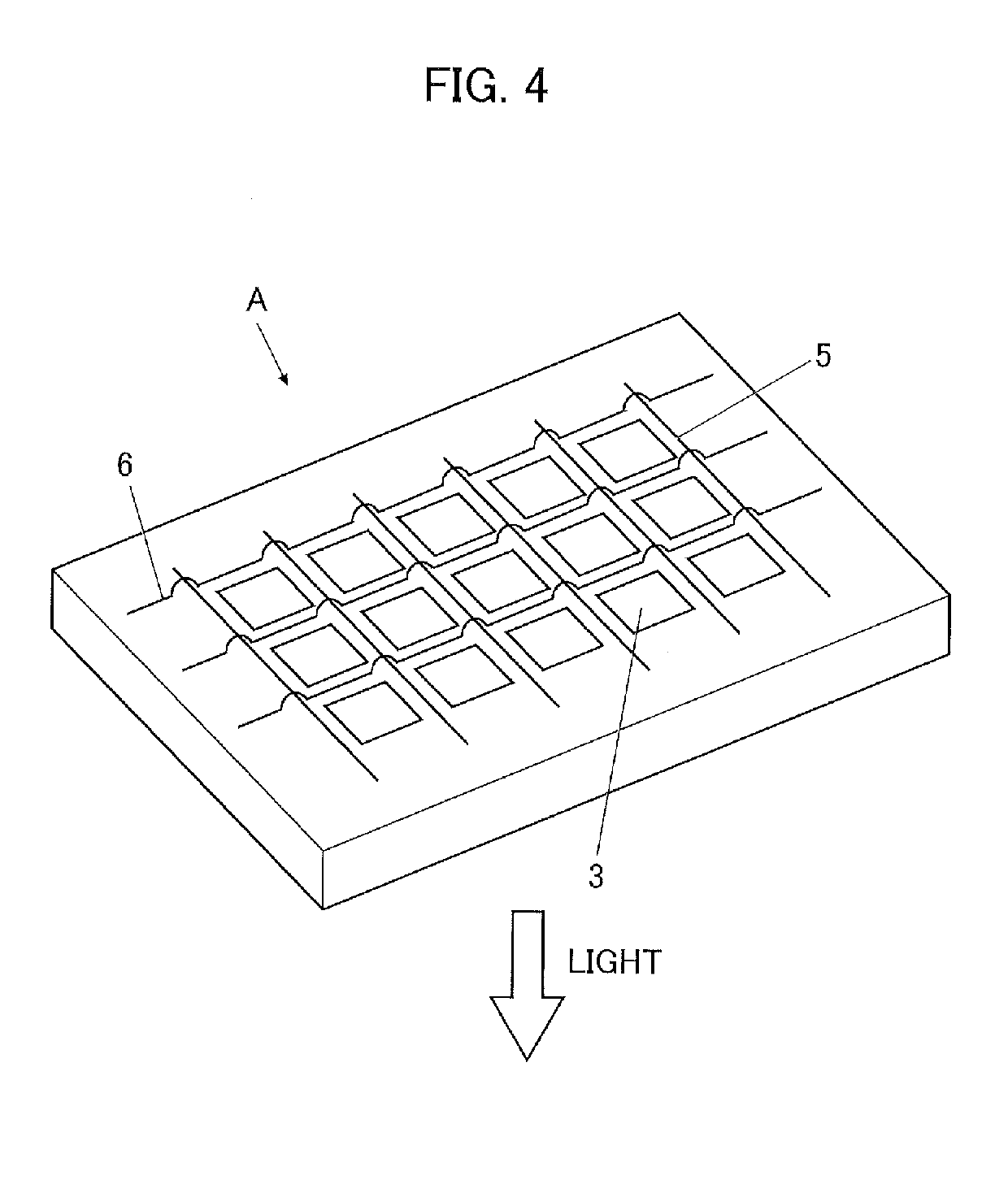Organic electroluminescent element, display and lighting device
a technology of electroluminescent elements and lighting devices, applied in the direction of identification means, instruments, solid-state devices, etc., can solve the problems of insufficient realization of electronic display using blue phosphorescence, insufficient lifetime of the element, and greatly high potential of phosphorescence, etc., to suppress voltage rise, suppress efficiency, and long lifetime
- Summary
- Abstract
- Description
- Claims
- Application Information
AI Technical Summary
Benefits of technology
Problems solved by technology
Method used
Image
Examples
examples
[0314]Hereinafter, the present invention will be described more specifically referring to Examples. However, the present invention is not limited to those Examples. Herein, a term of “part” or “%” is used in the Examples, while the term represents “part by mass” or “mass %” respectively unless otherwise noted.
[0315]Further, structures of the compounds used in the Examples are shown below. Herein, compounds other than those compounds are also described in the present specification. Note, the following compounds S-1, S-57 and H-441 are described in Japanese Unexamined Patent Application Publication No. 2014-179493, and compounds H-9 and H-219 are described in US Patent Application Publication No. 2013 / 0112952.
[0316]>
[0317](Formation of Anode)
[0318]On a glass substrate (NH Techno Glass Co., Ltd.) with a size of 100 mm×100 mm×1.1 mm, ITO (indium tin oxide) was deposited as an anode with a thickness of 100 nm. Then, the resulting transparent substrate provided with the ITO transparent el...
example 2
[0355]>
[0356]The organic EL elements 2-1˜2-4 were prepared the same as in the organic EL element 1-1 except that a material of every luminescent layer was changed to a compound listed in Table 13 shown later, the host compound B used for the luminescent layer was applied to the hole blocking layer, and a material of every electron blocking layer was changed from E1 to α-NPD. Finally, all the elements were sealed. Then, the elements thus prepared were evaluated the same as in Example 1, and the results were shown as relative values to the value of the organic EL element 2-4 thus set to 100.
[0357]The results of the evaluation were listed in Table 13.
TABLE 13PhosphorescentCompoundHost Compound AHost Compound BOrganicHOMOHOMOLUMOHOMOLUMOELEnergy T1EnergyEnergyT1EnergyEnergyElementCmpdλ maxLevelCmpdEnergyLevelLevelCmpdEnergyLevelLevelNo.No.(nm)(eV)No.(eV)(eV)(eV)No.(eV)(eV)(eV)2-1D-12485−4.82301a3.08−5.23−1.26351b3.10−5.46−1.552-2D-12485−4.82303a3.06−5.35−1.23352b3.07−5.79−1.472-3D-12485...
example 3
[0359]>
[0360]The organic EL elements 3-1˜3-16 were prepared the same as in the organic EL element 1-1 except that a material of every luminescent layer was changed to a compound listed in Table 14 shown later, the host compound B used for the luminescent layer was applied to the hole blocking layer, a material of every electron blocking layer was changed from E1 to α-NPD, a material of every electron transport layer were changed from ET-1 to ET-1 and ET-3 at the rate of 1:1, and a thickness of every electron transport layer was changed to 30 nm. Finally all the elements were sealed. Then, the elements thus prepared were evaluated the same as in Example 1, and the results were shown as relative values to the value of the organic EL element 3-15 thus set to 100.
[0361]The results of the evaluation were listed in Table 14.
TABLE 14PhosphorescentCompoundHost Compound AHost Compound BOrganicHOMOHOMOLUMOHOMOLUMOELEnergy T1EnergyEnergyT1EnergyEnergyElementCmpdλ maxLevelCmpdEnergyLevelLevelCm...
PUM
 Login to View More
Login to View More Abstract
Description
Claims
Application Information
 Login to View More
Login to View More - R&D
- Intellectual Property
- Life Sciences
- Materials
- Tech Scout
- Unparalleled Data Quality
- Higher Quality Content
- 60% Fewer Hallucinations
Browse by: Latest US Patents, China's latest patents, Technical Efficacy Thesaurus, Application Domain, Technology Topic, Popular Technical Reports.
© 2025 PatSnap. All rights reserved.Legal|Privacy policy|Modern Slavery Act Transparency Statement|Sitemap|About US| Contact US: help@patsnap.com



